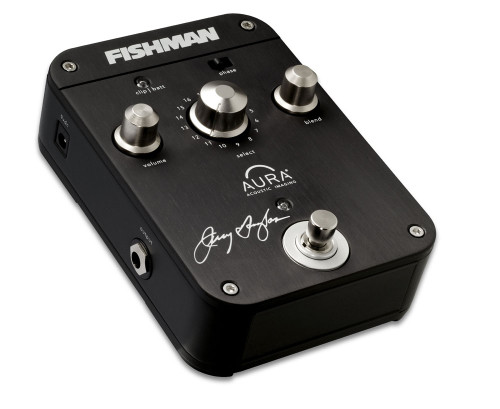Is your music more like a gentle Dr. Jekyll or an evil Mr. Hyde? No matter. Now you can play as badass or as sweetly as you want with the Truetone V3 Series Jekyll & Hyde Ultimate Overdrive Pedal from Strings and Beyond.
Bob Weil and Visual Sound introduced the Jekyll and Hyde pedal to the world in 1997. It was the first true dual-effect pedal for guitar players ever. This good/bad pedal became an immediate hit and the rest, as they say, is history.
Along the way, things have changed in terms of the business and the features offered. Visual Sound is now Truetone. The new V3 Series Jekyll & Hyde has been redesigned from scratch by Weil and RG Keen to meet the demands of today's players. With more flexibility, more great tones and better construction than any of its predecessors, this new incarnation of a historically great pedal is going to floor you. Click on the following link for some tips to get you started on your trip to a better musical experience:
Jekyll & Hyde User's Manual
Sample Settings - (Distortion, Overdrive, etc)
Distortion Controls:
- HI-GAIN: This is the "drive" knob
- TREBLE, BASS, MID: You know what these are.
- VOL: As in volume.
- Bright: A is very bright and less compressed than B. Turn down the treble knob a bit when using A.
- Voice: A has much of the character of previous Jekyll & Hyde pedals. B is a new sound that is more open and much louder.
Overdrive Controls:
- DRIVE: As in overdrive level.
- TONE: Not quite your typical tone knob, this one has a slight effect on gain as well as treble as you turn it. Higher produces more treble and gain, lower is less treble and gain.
Overdrive Distortion - VOL: As in volume.
- BASS: You guessed it - this controls the bass level.
- CLEAN MIX: This is a single-knob mixer to allow you to mix clean signal with overdrive signal. Fully counter-clockwise is 100% clean with no overdrive; fully clockwise is 100% overdriven. In between? That's where the magic is.
Internal Buffer On/Off: If you remove the bottom cover of the pedal, you will see a slide switch for each channel that allows you to turn on/off the Pure Tone buffer circuit. We recommend you leave the first channel buffer on. But if you want strictly true bypass switching, you may turn both switches off.
Internal Noise Gate On/Off: There is a mini slide switch to turn the distortion channel noise gate on or off, inside the pedal, next to the distortion footswitch. Just remove the bottom cover of the pedal to see it.
Battery: You can use a battery, but - why? Use a 1 SPOT! If you must use a battery, please remember to unplug both in and out when not using the pedal to conserve battery life.
IN and OUT:
Unlike previous versions of Jekyll & Hyde, the V3 version is really two pedals in one box. No, seriously, it even has separate ins and outs if you want to use them.









